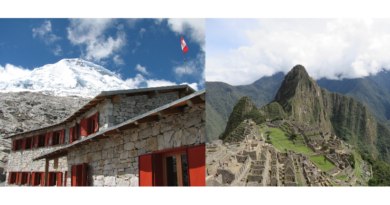CUZCO THE CITY OF STONE

Spanish Cuzco, a singular place, where the streets that have run in blood, gold, piss, trodden by presidents and hookers, horses and SUV’s. Cuzco, located in southern Peru on top of the Andes, now has a population of 700,000. On a dark stone-lined street a few blocks away from the center…mister, you want weed, coke? Five offers for pot within one hour, not the same Cuzco it used to be. A few years ago they opened a McDonald’s right in the historic plaza, the place where the Spaniards ripped apart the revolutionary Tupac Amaru with four horses, the city built on the ruins of the Inca capital by Pizzaro. Would you like to Super Size that? No. KFC opened just four storefronts down and Starbucks is at the south side of the plaza. Commercialization and globalization of Cuzco is losing some of the place’s charm. Cuzco- “hey friend, you want to buy marijuana? Coke?” “Mister, you buy hat?” “Amigo, look, nice paintings” and “Massage, you want massage, only 50 Soles one hour.” Of course, there are also shoeshine boys and random street beggars holding their hands out. Walking the historic center is a constant barrage of people wanting to take your money. The arched covered sidewalks are teaming with crowds, making one weave forward keeping alert to the traffic, crossing the streets timing the cars that have no compassion for pedestrians. Young thin girls wearing tight jeans and high-heeled shoes are strolling with boyfriends while holding a single rose. Spiked heels in Cuzco! Talk about the ultimate female obstacle course with the cobblestone streets, stairs, and uneven surfaces. This same place has 5 star hotels, upscale boutique venues, many costing over one thousand dollars a night. From street vendors selling grilled meats to fine dining with international fusion Peruvian cuisine, Cuzco has a spectrum to satisfy the backpacker in rites of passage to the retiree groups chasing a bucket list closure.

At Cuzco, it is painful watching the tourists discuss the culture shock of eating a cuy (guinea pig) while having dinner in the restaurant overlooking the plaza de Armas. First, they miss-pronounce the word, second, they debate if they should try it or not. One dude took on the brave attitude in front of the women, saying that he will order it. In a sterile setting, paying 5 times too much for what will surely be not so good of a cuy. In Cuzco there is pronounced emphasis on “comida tipica”, the typical food. What accompanies this is another consistently typical affair involving competing intestinal fauna, resulting in flatulent liquid violent discharge. The domestic water supply in the city of Cuzco has long been contaminated. Inca corn and papas is not enough, travellers to Cuzco should arrive stocked with Imodium tablets or stronger antibiotics.

The Coca museum, had coca cookies, and coca beer, I have had coca tea, and chewed the coca leaves. The coca has many good uses, makes a nice tea. Other end products generate massive paranoia regarding this sacred plant to the Andean people.
Early morning rain, glistening cobblestone streets, people heading into work but the rows of old buildings have the storefronts closed, and we walk along the back alleyways down to the temple at Qoricancha and then farther south to merge with Avenida del Sol. Then go to Plaza de Armas and sit on the uppermost stair step in front of the principal church. The massive stone structure behind, the cold stone steps, and the plaza near midnight- is part of the experience. It is to acknowledge being on a single page of history, partaking of a long history, the center echoing with Spanish and Catholic atrocities, the modern vending of crafts and liqueur. To take in the reality of Cuzco is to transcend its past and future, to understand how one personally belongs in this Andean existence. It is a question that arises with each visit to Cuzco, for going there once is not enough for full comprehension. One must see the seasons, know the routines, and interact with the people to understand the time passing in this city of stone and appreciate Cuzco Gold.

Do connect with us:
ResearchGate: James M. Wise
Author´s page: James M. Wise
Photography page: JamesM.Wise.com
Twitter: JamesM_Wise
Facebook: Yanira K. Wise
Author´s page: Yanira K. Wise
Instagram: yanirak.wise
Twitter: @YK_Wise
Facebook for South America to the World
Exploring South America’s inexhaustible creative force.


